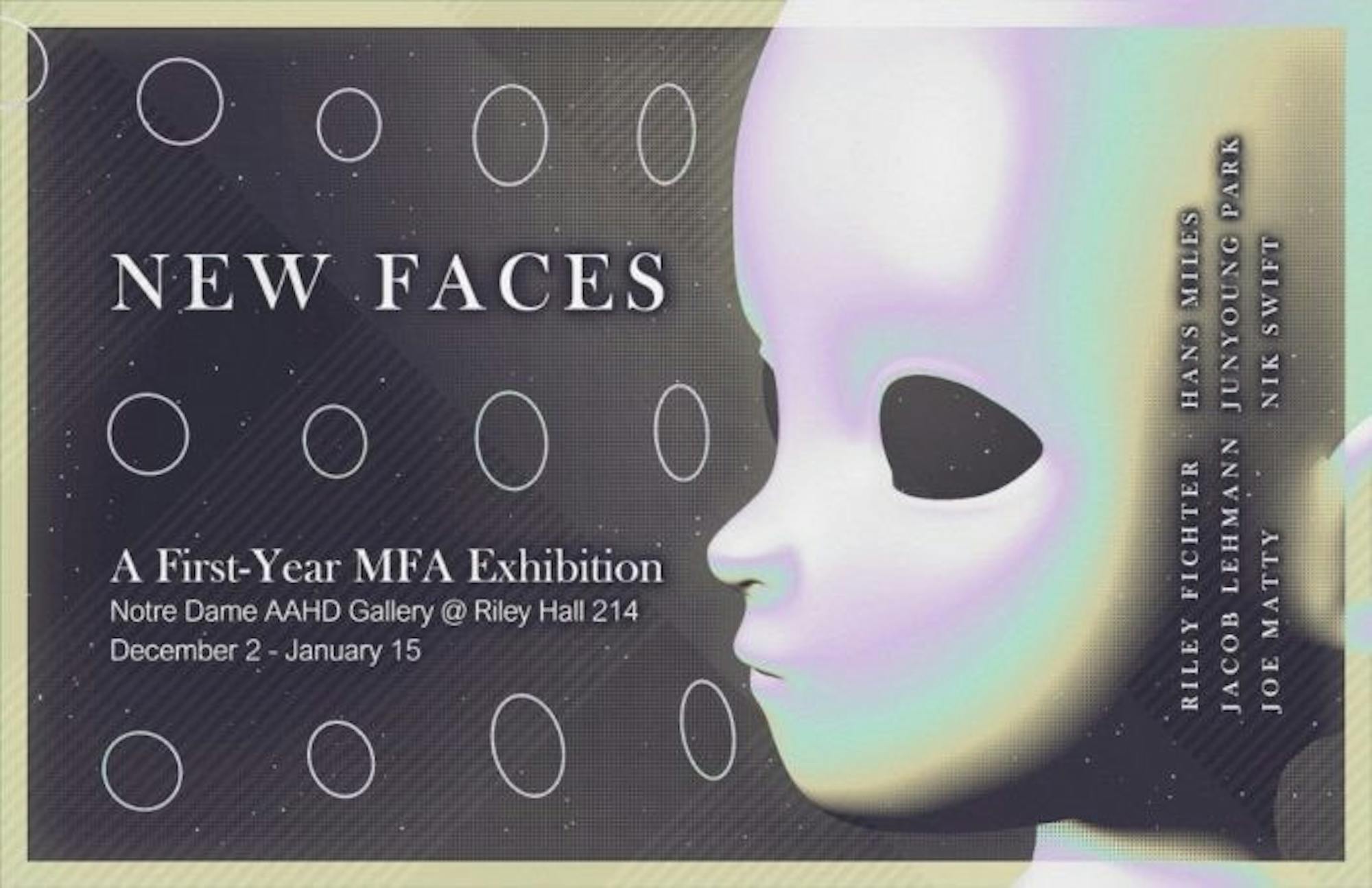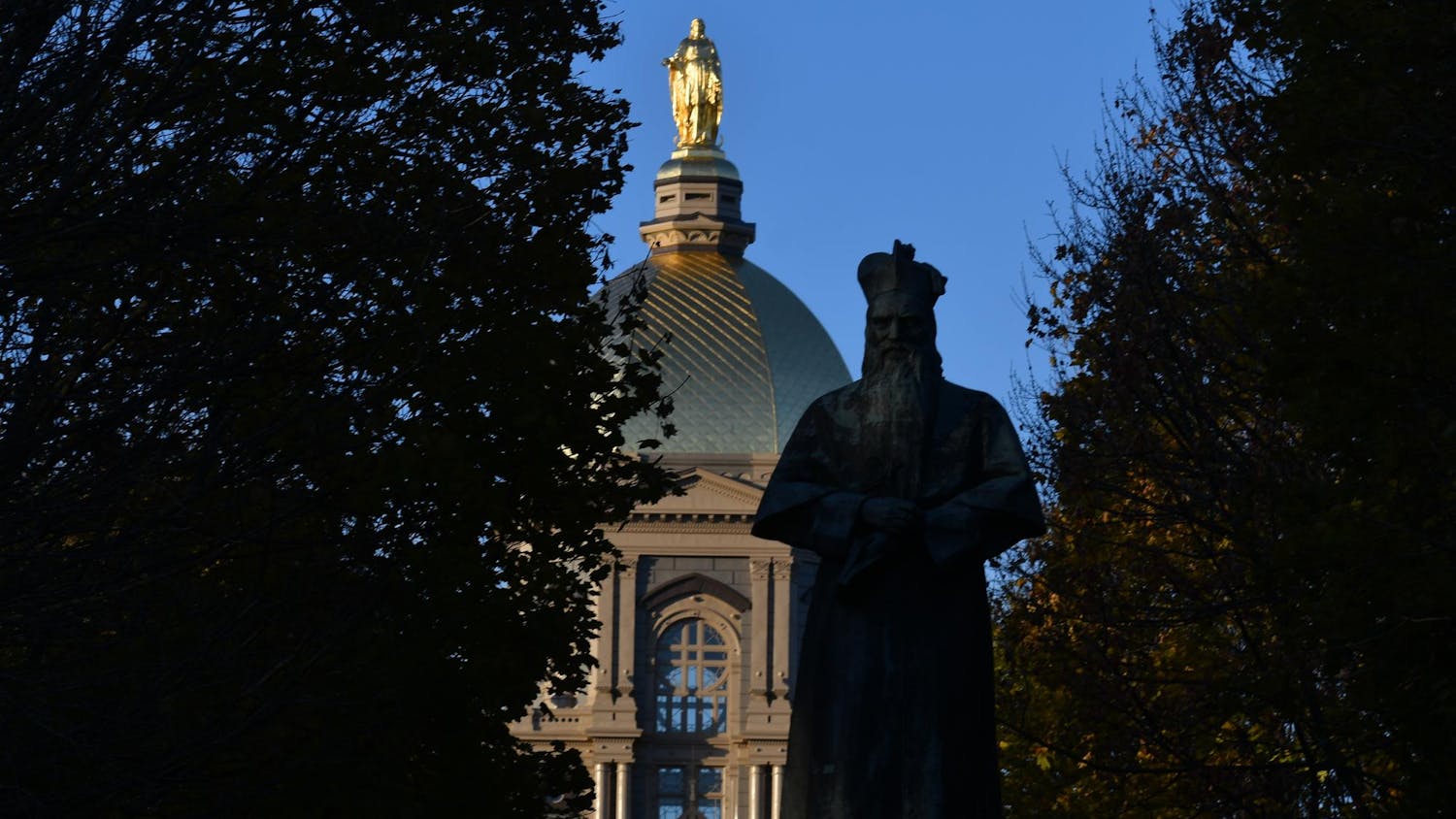The Art, Art History and Design (AAHD) Department’s “New Faces” exhibition will open in the Riley Hall gallery with a reception from 5 to 7 p.m. on Thursday. It will feature the work of the department’s Masters of Fine Art (MFA) program’s six first-year students: Riley Fitcher, Jacob Lehmann, Joe Matty, Hans Miles, Junyoung Park and Nik Swift.
The annual show is the first for the artists to showcase their work as graduate students and includes ceramics, sculpture, industrial design, visual communication design, painting and photography pieces.
Professor of painting and drawing and AAHD director of graduate studies Maria Tomasula guided the MFA students in organizing the exhibition, which will remain open to the public until Jan. 14, 2022.
She said she is most proud of how the first-year cohort worked together to set up the exhibition and expressed excitement for the Notre Dame community to view the work of these artists for the first time.
“Audiences can expect to see works in a broad spectrum of media dealing with a range of contemporary global issues … from the Anthropocene to generational trauma,” Tomasula said. “Each artist [or] designer creates work motivated by ideas that drive them, but collectively, the show reflects an awareness of those larger political, economic, social and environmental issues that shape contemporary life.”
Jacob Lehmann — a Clemson, South Carolina, native and former high school visual arts teacher with aspirations of working in higher education after completing his MFA — said he looks forward to exhibiting two of the large-scale multimedia works he has created this semester.
“[My work] is about childhood and play, particularly at the intersection of technology and imagination,” Lehmann said. “However, all of this is done through the adult lens. I pull imagery from my own childhood which makes the work personal. It’s also an investigation on how media and imagery from childhood identity.”
He sees his works as vessels that allow viewers into interior spaces that advance and recede. Through the use of familiar materials like crayons, collages and neon rope, he said he hopes to trigger a sense of familiarity and awe in viewers.
“I am most excited for my father to see some of my work in person,” Lehmann added. “He has always been a child at heart, and for him to be able to experience these works is very special.”
Nik Swift’s project, “Heartbeat Here Now,” also explores themes of technology and reality. A 2017 Notre Dame computer science graduate, Swift worked in web design consulting in Chicago before returning to the University in the fall of 2021 to pursue his MFA in visual communication design.
The creation of his installation piece involved building a complex sensor and its interface, constructing an intricate system of cables, data connections and setting up a computer to run 24/7 for the duration of the exhibition.
“[The sensor] visualizes your form and your heartbeat into an abstract, organic wash of colors and patterns [on to a projector] along with the form and heartbeat of another person in the same way at the same time,” the new media and generative digital artist from Maryland explained. “I’ve been playing with biological rhythms for a while, and this project quickly started to stand out as something that effectively balances visual intrigue with interactive elements.”
In addition to the influence of technology on his installation, Swift said the work was also inspired by his practices of mindfulness and Eastern philosophy. The title of the piece references the famous book on yoga and Eastern spirituality “Be Here Now” by the late meditation, spirituality and yoga teacher Ram Dass.
This is the first time Swift has created a project of this scale, and he said he hopes to add an element of sound to it next semester with the help of Artificial Intelligence.
“I’m most proud of the completeness of this installation,” he said. “I was able to consider everything from the aesthetic to the interactions to the typography to the logistics of installing it. [It was] much more fulfilling than making a project that only exists on my computer screen or on Instagram!”
Tomasula praised Lehmann and Swift, saying both artists have shown a real willingness to try new and experimental processes in their exhibited work.
“I hope audiences take away from this what art and design can offer — an experience of alchemical transformation that happens when physical materials are shaped into forms that embody and broadcast ideas, experiences, hopes and other affective states,” Tomasula said. “Art and design can galvanize people towards deeper consideration as well as to action.”
Masters of Fine Arts students showcase work in ‘New Faces’ exhibition
Courtesy of the Notre Dame Art, Art History and Design Department
Promotional poster for the “New Faces” exhibition.
An image of the projections featured in Nik Swift’s “Heartbeat Here Now” installation









